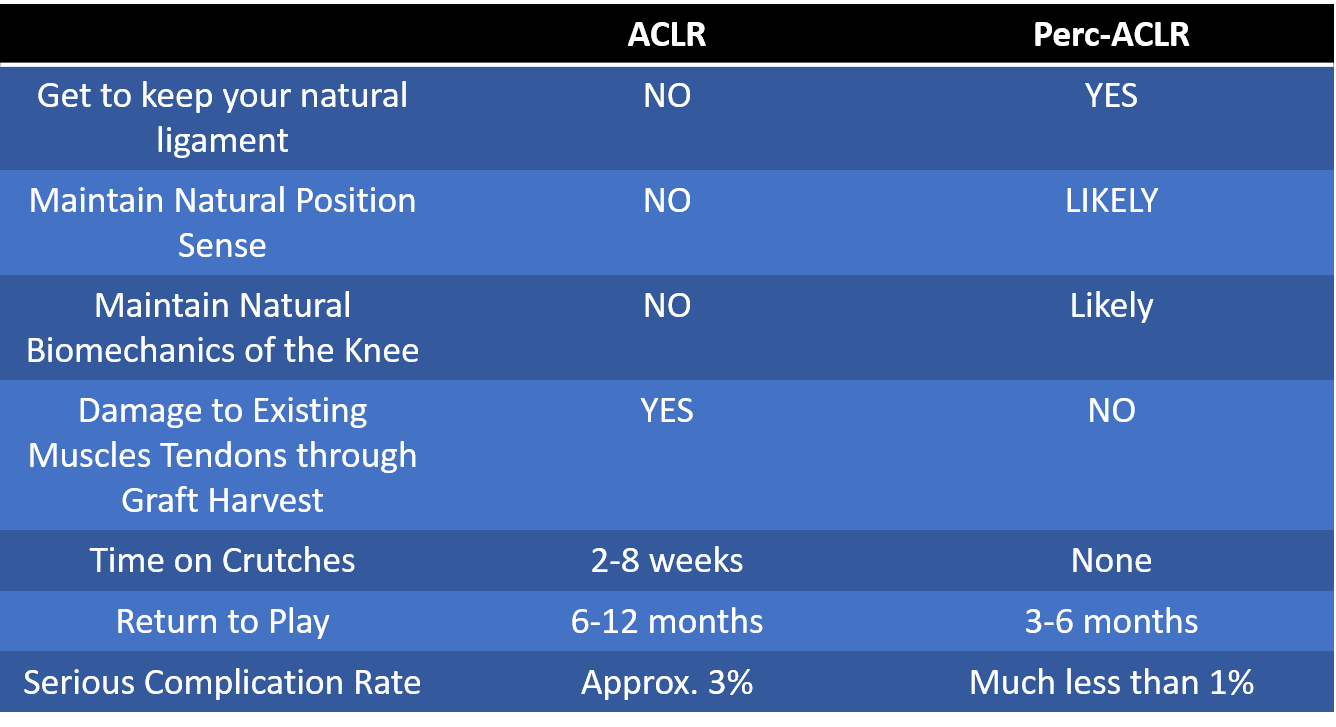Introducing Perc-ACLR
As many of you know, we pioneered the precise injection of a torn ACL with stem cells, but as we’ve published our results and get ready to publish a second paper, the procedure hasn’t been given a specific name. Recently, I was asked by Orthopedics Today to write one side of a “Point-Counter-Point” where I would argue that most ACL tears now being operated didn’t need surgery; whereas, another physician would argue the other side. This opportunity to get our work out there brought up an interesting problem: all modern procedures have snappy names. In fact, the surgery I would be arguing against has the name ACLR (ACL reconstruction). When I thought about that a bit, it hit me that the name for our procedure should be Perc-ACLR. Let me explain.
ACLR Has Issues
While it is the standard of care for ACL tears that are causing functional disability, ACL reconstruction surgery has its problems. For example, the new artificial ligament goes in at a much steeper angle than the original equipment, making the knee behave differently from a biomechanical standpoint. Also, the knee loses its critical and important position sense. Finally, ACL surgery hasn’t been shown to protect the knee from arthritis or prevent professional athlete’s careers from being shortened, which are some of the reasons many patients pursue the surgery.
Meet Perc-ACLR
Perc-ACLR stands for percutaneous ACL repair. Note that percutaneous denotes an injection without surgery and that “reconstruction” has been replaced with the word “repair.” The last bit is important, because rather than ripping the injured ligament out, drilling holes, and putting in an inferior substitute for the natural ligament, the Perc-ACLR procedure attempts to help the ligament repair itself.
Below is a comparison between the two procedures:
Suffice it to say that Perc-ACLR allows you to keep your natural ligament with all of the benefits of that, including the ability to feel the joint position and have normal biomechanics of the knee. Also, it doesn’t damage existing muscles (as has been shown with the tendon graft site with ACLR). Finally, recovery and return to play are much quicker, and the injection procedure has just a fraction of the complication rate of the surgical procedure.
The Upshot? Perc-ACLR is already changing the lives of athletes and weekend warriors worldwide, as we now have an ever-growing group of patients who were told that they needed their ACL removed and replaced with a poor substitute, who instead have gotten to keep their natural ligament. While only about 70% of surgical candidates can be helped with Perc-ACLR, that hopefully represents millions of patients over the next decade who will get to keep their own ACLs!

NOTE: This blog post provides general information to help the reader better understand regenerative medicine, musculoskeletal health, and related subjects. All content provided in this blog, website, or any linked materials, including text, graphics, images, patient profiles, outcomes, and information, are not intended and should not be considered or used as a substitute for medical advice, diagnosis, or treatment. Please always consult with a professional and certified healthcare provider to discuss if a treatment is right for you.

